Improve reaction understanding with real-time in situ analysis.
METTLER TOLEDO’s ReactIR FTIR spectrometer enables stable, scalable, and reliable process development. It allows researchers to quantify reaction profiles and trends in real time, offering highly specific data about pathways, mechanism, kinetics, as well as the effect of reaction variables on performance.
With the ReactIR spectrometer, users can directly track products, by-products, reagents, reactants, and intermediates as these products undergo a change as the reaction progresses.
The ReactIR offers vital information to researchers as they investigate, create, and improve chemical processes, synthetic routes, and chemical compounds.
Reaction Analysis Simplified
To interpret chemical reactions, chemists should address the following questions:
- What are the reaction mechanism and kinetics?
- When does the reaction begin and when does it end?
- What happens when there is a change in reaction temperature, mixing rates, and dosing rates?
- What is the impact of those transient intermediates?
- Did it react as anticipated? Did any by-products develop and why?
In-Situ Fourier Transform Infrared (FTIR) Spectroscopy with ReactIR
Video Credit: METTLER TOLEDO
To achieve optimal data and examine the reactions rapidly, the ReactIR FTIR spectrometer exploits five areas so that chemists—whether experts or not—can have an understanding of the reactions.
Best-in-class performance
Whether it is a detector, probe, or software, the ReactIR has been improved for use in the mid-IR “fingerprint” region, leading to a highly responsive system for precise and fast molecular data.
|
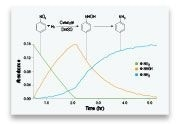
Image Credit: METTLER TOLEDO
|
One-click analytics
The iC IR software has been developed for time-resolved reaction analysis and integrates a peak picking algorithm with functional group intelligence to considerably decrease the analysis time. Users can integrate their chemistry knowledge with an automated data analysis workflow to guarantee accurate collection and understanding of each experiment.
|
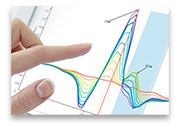
Image Credit: METTLER TOLEDO
|
Wide range of in situ probes
Probes developed to work from low to high pressure, low to high temperature, under basic, acidic, caustic, aqueous, and oxidizing conditions help analyze almost all kinds of chemistries.
|
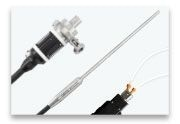
Image Credit: METTLER TOLEDO
|
Solutions from laboratory to plant
The ReactIR FTIR spectrometers are ATEX rated to fit in a plant, are sufficiently small to be accommodated in a fume hood, and use sampling technology to sample any process or reaction. The ReactIR instrument can be utilized to demonstrate what happens in the plant is what users observe in the laboratory.
|
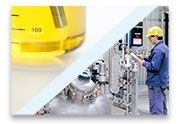
Image Credit: METTLER TOLEDO
|
Extensive reaction analysis experience
METTLER TOLEDO has more than three decades of dedicated reaction analysis experience. This is the company’s passion and focus. METTLER TOLEDO has incorporated this know-how into fit-for-purpose FTIR spectrometers.
|

Image Credit: METTLER TOLEDO
|
ReactIR in Recent Journal Publications
Constant measurements from infrared spectrometers are utilized to achieve reaction profiles to compute the reaction rates. A publication list from peer-reviewed journals gives focus to innovative and interesting applications of the ReactIR FTIR spectrometer.
Scientists in both industry and academia use in situ mid-FTIR spectrometers to offer rich experimental data and in-depth information to improve their research.
Featured citations of ReactIR
- Meng Shan-Shui, Lin Li-Rong, Luo Xiang, Lv Hao-Jun, Zhao Jun-Ling, and Chan Albert S. C., “Aerobic oxidation of alcohols with air catalyzed by decacarbonyldimanganese” (2019) Green Chemistry issue 22.
- Mei Carmen, Deshmukh Sasmit, and Cronin James (et al), “Aluminum Phosphare Vaccine Adjuvant: Analysis of Composition and size using off-line and in-line Tools,” Computational and Structural Biotechnology Journal (2019) vol 17 pp1184-1194.
- Beutner, G., Young, I., Davies, M., Hickey, M., Park, H., Stevens, J., Ye, Q., “TCFH−NMI: Direct Access to N‑Acyl Imidazoliums for Challenging Amide Bond Formations,” Organic Letters (2018) 20, 4218−4222.
- Rao Kallakuri Suparna, St-Jean Frederic, and Kumar Archana; “Quantitation of Ketone Enolization and Vinyl Sulfonate Stereoisomer Formation using inline IR spectroscopy and Modeling” (2019) Organic Process Research & Development 23,5,945-951.
- Rehbein, M., Husmann, S., Lechner, C., Kunick, C., Scholl, S., “Fast and calibration free determination of first order reaction kinetics in API synthesis using in-situ ATR-FTIR.” European Journal of Pharmaceutics and Biopharmaceutics 126 (2018) 95–100.
Why Choose ReactIR Over Offline Analysis?
Generally, reaction information is obtained by taking samples for offline analysis using HPLC. With regard to chemistries, where the removal of samples leads to the loss of crucial data, or are toxic or otherwise dangerous, this is not a simple process. Moreover, chemists should be present to take the samples and subsequently wait for the outcomes before reaction analysis is initiated.
Reaction Analysis Case Study: Transient Intermediate Detection #TCFH
Video Credit: METTLER TOLEDO
These issues have the following implications:
- Destruction of intermediate results in inaccurate pathway hypothesis
- The sample may probably be not representative
- Poor interpretation of toxic, air sensitive, pressurized, or explosive systems
- Crucial events that affect process or product quality may be overlooked
- Prolonged development times owing to incorrect data due to change in the reaction
ReactIR is Ready!
The ReactIR 702L is the world’s first system that actually integrates the power of in situ, real-time FTIR with corresponding operational convenience. The ReactIR spectrometer has been optimized for all chemists and for all kinds of experiments.

Image Credit: METTLER TOLEDO
ReactIR is ready to run overnight!
The ReactIR 702L system utilizes solid-state cooling technology to offer excellent performance, without the requirement for liquid nitrogen. By avoiding repetitive Dewar refills and dangerous setup, researchers can easily track chemistry over prolonged periods.
ReactIR is ready to grab and go!
Compact and stackable units save significant space in the fume hood, providing flexibility to deploy the ReactIR speedometers in different locations across the laboratory. In addition, an “always on” detector not only decreases the setup time but also allows researchers to confidently collect the data quickly.
ReactIR is ready for users’ chemistry!
Flow-based and probe-based sampling technologies allow researchers to examine gas and liquid phase chemistry in continuous or batch setups. With fit-for-purpose construction materials, data collection is made simple in corrosive and acidic settings over a broad range of pressures and temperatures.
ReactIR Applications
The ReactIR FTIR spectrometer operates in a broad range of chemistries, where the concentration is greater than ~0.1, the molecule is infrared active, and the chemistry is off-gas or in solution.
ReactIR: FTIR Spectrometer Technology & Applications
Video Credit: METTLER TOLEDO
Standard application areas include:
- Hydrogenation reactions
- High-pressure reactions
- Polymerization reactions
- Halogenation
- Grignard reaction mechanisms
- Hydroformylation or oxo synthesis/process
- FTIR spectroscopy
- Catalyzed reactions
- Flow chemistry
- Biocatalysis/enzymatic catalysis
ReactIR Versus Raman
A comparison
Although Raman and ReactIR spectrometers are generally interchangeable and offer complimentary data, there are practical variations that show which instrument will be optimal. Both Raman and FTIR activities are facilitated by most molecular symmetry. Raman bands and IR bands are mutually exclusive in a molecule containing a center of inversion—that is, the bond will be IR active or Raman active but it will not be both.
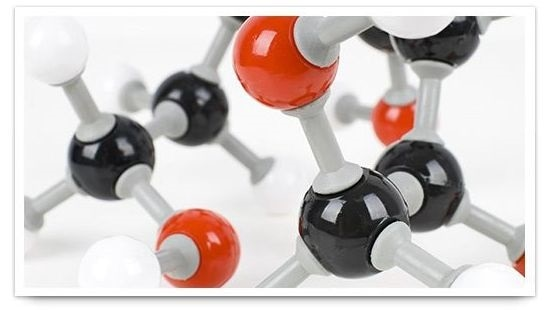
Image Credit: METTLER TOLEDO
The rule of thumb is that functional groups that have large dipole changes are intense in the IR, while functional groups that have a high level of symmetry or weak changes in dipoles and have no net dipole change will be better observed in Raman spectra.
ReactIR should be selected when:
- Bonds with powerful dipole changes are significant, for example, N=O, O-H, and C=O
- Reactions in which reactants and reagents are at low concentration
- Reactions in which solvents, reagents, reactants, and reaction species fluoresce
- Reactions in which the resultant intermediates are IR active
- Reactions in which the solvent bands are intense in Raman and can swamp the signal of major species
Raman should be selected when:
- Analyzing particles in solution is significant, for example, polymorphism
- Analyzing carbon bonds in aromatic and aliphatic rings is of major interest
- Investigating reactions in aqueous media
- Investigating reaction initiation, endpoint, as well as product stability of colloidal and biphasic reactions
- Analyzing lower frequency lattice modes is of primary interest
- Bonds that are hard to observe in FTIR, for example, 0-0, C=S, S-H, C=C, N=N, etc.
- Lower frequency modes are significant, for example, metal-oxygen
- Reactions in which observation via a reaction window is both safer and easier, for example, polymerizations and high-pressure catalytic reactions
What’s Hiding Between the HPLC Samples?
This study has demonstrated five examples taken from the latest journal articles, where the ReactIR FTIR spectrometer achieves tasks that would be impossible, difficult, or excessively time-consuming, if performed with conventional offline methods:
- Rapidly determine kinetics—First order reaction kinetics in a single experiment
- Demonstrate reaction mechanisms—transient intermediate detection in a coupling reagent
- Track reaction progress for better purity and yield—determination of optimal reaction endpoint
- Track difficult-to-sample chemistry—lithiation reaction is carried out at −70 °C
- Eliminate hold time to boost throughput and quality—decomposition results in epimerization
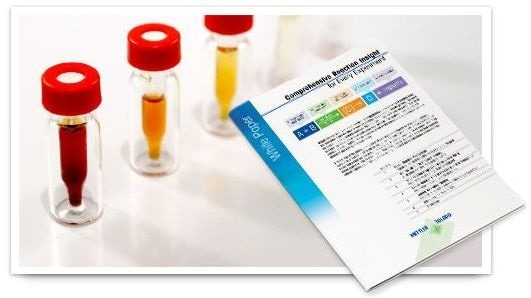
Image Credit: METTLER TOLEDO